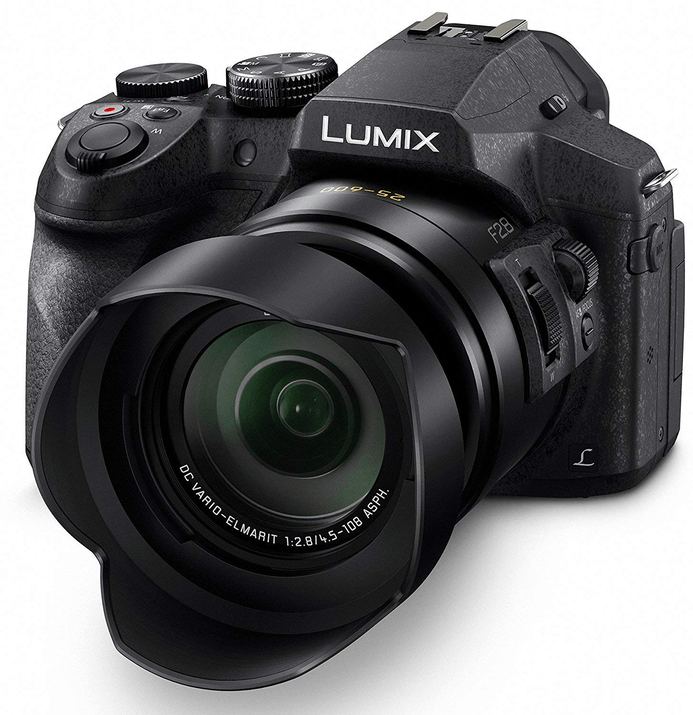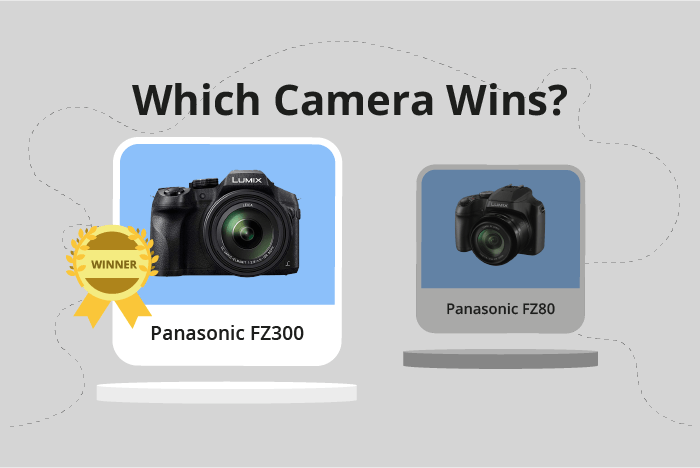Panasonic Lumix FZ300 / FZ330 vs Lumix FZ80 / FZ82 Comparison
Panasonic Lumix FZ300 / FZ330

Panasonic Lumix FZ80D

The Panasonic Lumix FZ300 / FZ330 and the Lumix FZ80 / FZ82 are both bridge cameras with the same score of 54/100. These cameras share similarities in their specifications, such as their type and camera size. The FZ300 / FZ330, released in 2015, measures 132 x 92 x 117mm and weighs 691g, while the FZ80 / FZ82, released in 2017, measures 130 x 94 x 119mm and weighs 616g.
The Lumix FZ300 / FZ330 has the advantage of being slightly lighter, making it more comfortable for extended use. On the other hand, the Lumix FZ80 / FZ82 has a lower launch price of $399.99 compared to the FZ300 / FZ330’s $600, allowing for a more budget-friendly option.
Considering the similarities in specifications and performance, the choice between these two cameras ultimately comes down to personal preferences such as weight and budget.
Panasonic Lumix FZ300 / FZ330 vs Lumix FZ80 / FZ82 Overview and Optics
The Panasonic Lumix FZ300 / FZ330 wins the optics comparison by a narrow margin, scoring 49/100, while the Panasonic Lumix FZ80 / FZ82 scores 48/100. Both cameras share several common specifications, including the CMOS sensor type, Venus Engine processor, 1/2.3″ sensor size, fixed lens mount, and image stabilization.
The FZ300 / FZ330 outperforms the FZ80 / FZ82 in shooting speed, offering 12 fps compared to the FZ80 / FZ82’s 10 fps. This faster shooting speed allows the FZ300 / FZ330 to capture fast-moving subjects more effectively, making it a better choice for action photography.
On the other hand, the FZ80 / FZ82 has an advantage in terms of megapixels, boasting 18 MP compared to the FZ300 / FZ330’s 12 MP. This higher resolution enables the FZ80 / FZ82 to capture more detail, which can be beneficial for photographers who need to crop their images or create large prints.
However, despite the FZ80 / FZ82’s higher megapixel count, its DXOMARK sensor score is significantly lower than the FZ300 / FZ330’s (71 vs 50). This indicates that the FZ300 / FZ330’s sensor performs better overall, potentially providing better image quality despite having fewer megapixels.
Taking all factors into consideration, the Panasonic Lumix FZ300 / FZ330 emerges as the winner in this optics comparison, thanks to its faster shooting speed and better sensor performance. However, the Panasonic Lumix FZ80 / FZ82 still has its merits with a higher megapixel count, making it a valid option for those who prioritize resolution over other factors.
Panasonic Lumix FZ300 / FZ330 vs Lumix FZ80 / FZ82 Video Performance
The Panasonic Lumix FZ80 / FZ82 emerges as the winner in the video capabilities comparison, scoring 83/100, while the Panasonic Lumix FZ300 / FZ330 scores 69/100. Both cameras share common specifications, such as 4K maximum video resolution, 3840 x 2160 maximum video dimensions, and 60fps maximum video frame rate.
The FZ80 / FZ82 outperforms the FZ300 / FZ330 with its built-in time-lapse functionality, which allows users to capture stunning time-lapse videos without needing additional equipment or software. This feature enhances the video capabilities of the FZ80 / FZ82 and contributes to its higher score.
On the other hand, the FZ300 / FZ330 does not offer any distinct advantages in video capabilities over the FZ80 / FZ82. Both cameras have the same core video specifications, making the FZ300 / FZ330’s lower score primarily due to the absence of time-lapse functionality.
Taking into account the differences and similarities in video capabilities, the Panasonic Lumix FZ80 / FZ82 stands out as the superior choice for videographers, thanks to its time-lapse feature. Meanwhile, the Panasonic Lumix FZ300 / FZ330, while still a capable camera, does not provide any additional benefits in this area.
Panasonic Lumix FZ300 / FZ330 vs Lumix FZ80 / FZ82 Features and Benefits
The Panasonic Lumix FZ300 / FZ330 and the Panasonic Lumix FZ80 / FZ82 both achieved a feature score of 70 out of 100. These cameras share several specifications, such as a 3-inch screen size, a screen resolution of 1,040,000 dots, touchscreens, and the absence of GPS.
The Lumix FZ300 / FZ330 stands out due to its flip screen feature. This advantage allows users to take photos from different angles and is particularly useful for vlogging or taking selfies. The FZ300 / FZ330, however, does not have Bluetooth capabilities.
On the other hand, the Lumix FZ80 / FZ82 does not have a flip screen but does offer Bluetooth and Wi-Fi connectivity. These features make it easier to transfer files and control the camera remotely.
Considering the features of each camera, the Lumix FZ300 / FZ330 is a better choice for those who value flexibility in shooting angles and vlogging. The Lumix FZ80 / FZ82, with its Bluetooth and Wi-Fi capabilities, is more suitable for users who prioritize seamless file transfer and remote control options. Ultimately, the best choice depends on the individual’s specific needs and preferences.
Panasonic Lumix FZ300 / FZ330 vs Lumix FZ80 / FZ82 Storage and Battery
The Panasonic Lumix FZ300 / FZ330 and the Panasonic Lumix FZ80 / FZ82 both score 35/100 in storage and battery. They have identical storage specifications, with one memory card slot each and compatibility with SD, SDHC, and SDXC memory cards. Both cameras also support USB charging.
The FZ300 / FZ330 outperforms the FZ80 / FZ82 in battery life, providing 380 shots compared to the FZ80 / FZ82’s 330 shots. This longer battery life makes the FZ300 / FZ330 more suitable for extended photography sessions. Both cameras use different battery types, with the FZ300 / FZ330 using a lithium-ion battery and the FZ80 / FZ82 using a DMW-BMB9 battery.
Despite the difference in battery life, neither camera emerges as a clear winner in the storage and battery category. The slight advantage of the FZ300 / FZ330 in battery life may be important for some users, but overall, both cameras offer similar storage and battery capabilities.
Panasonic Lumix FZ300 / FZ330 vs Lumix FZ80 / FZ82 – Our Verdict
Are you still undecided about which camera is right for you? Have a look at these popular comparisons that feature the Panasonic Lumix FZ300 / FZ330 or the Panasonic Lumix FZ80 / FZ82:
- Panasonic Lumix DMC-FZ2000 / FZ2500 vs Lumix FZ80 / FZ82
- Panasonic Lumix DMC-FZ2000 / FZ2500 vs Lumix FZ300 / FZ330
- Panasonic Lumix DMC-FZ1000 II vs Lumix FZ300 / FZ330
- Panasonic Lumix DMC-FZ1000 II vs Lumix FZ80 / FZ82
- Canon PowerShot SX70 HS vs Panasonic Lumix FZ80 / FZ82
- Nikon Coolpix P950 vs Panasonic Lumix FZ80 / FZ82

